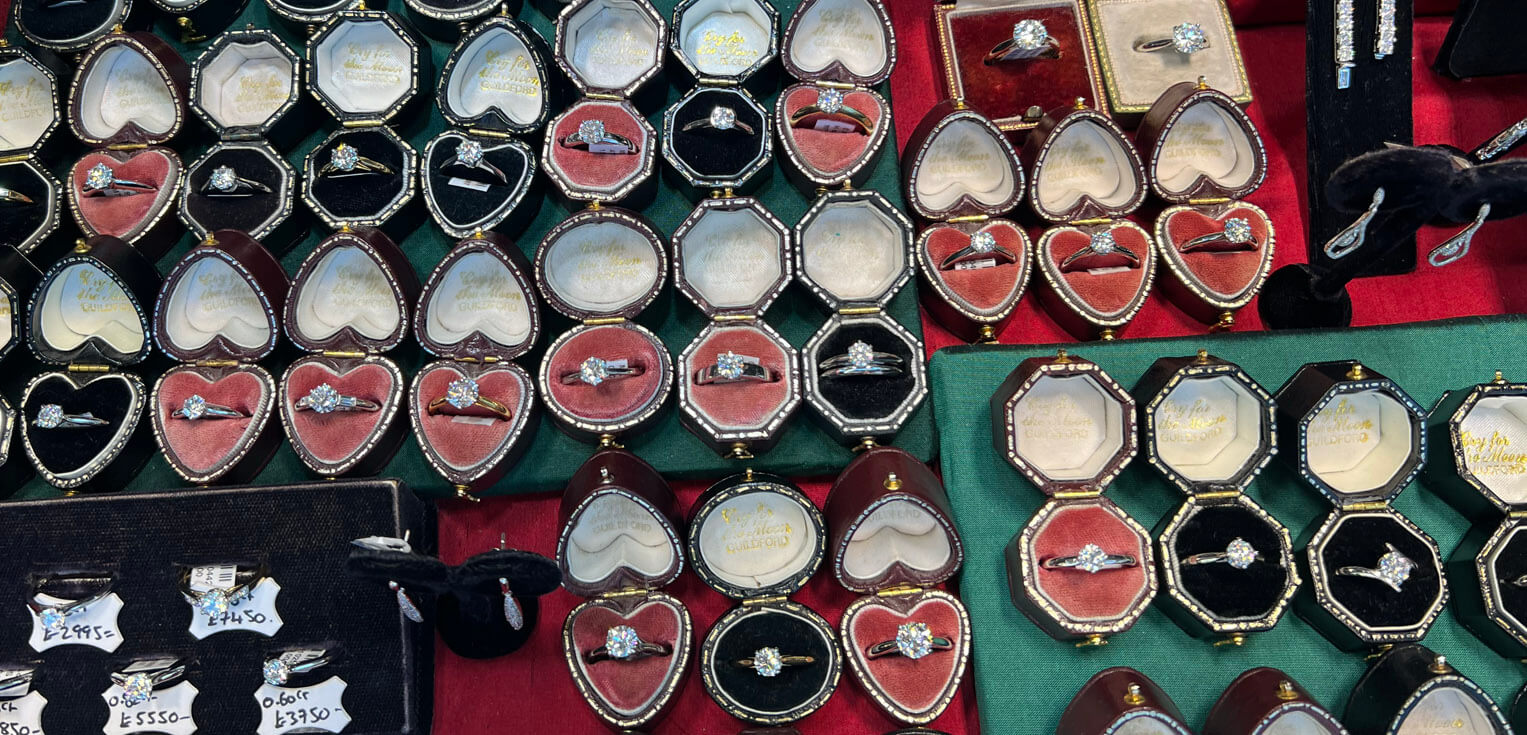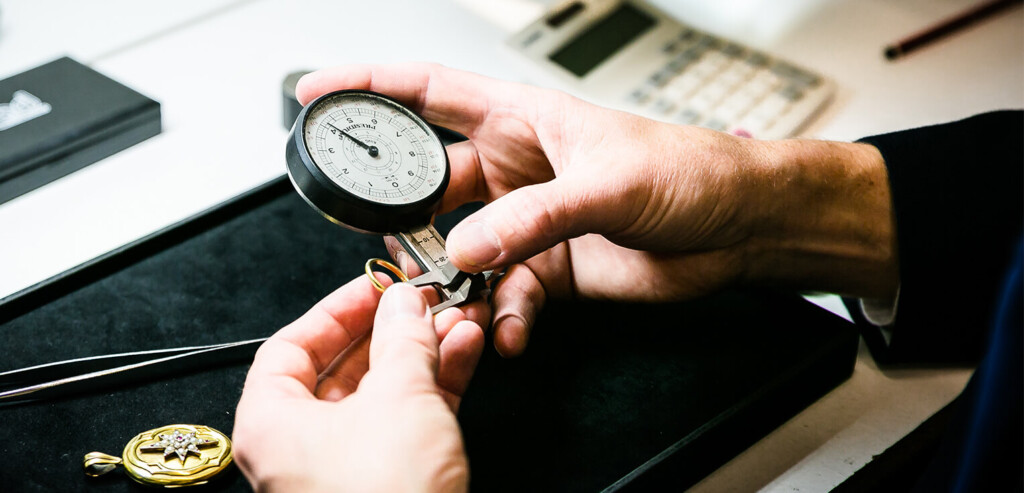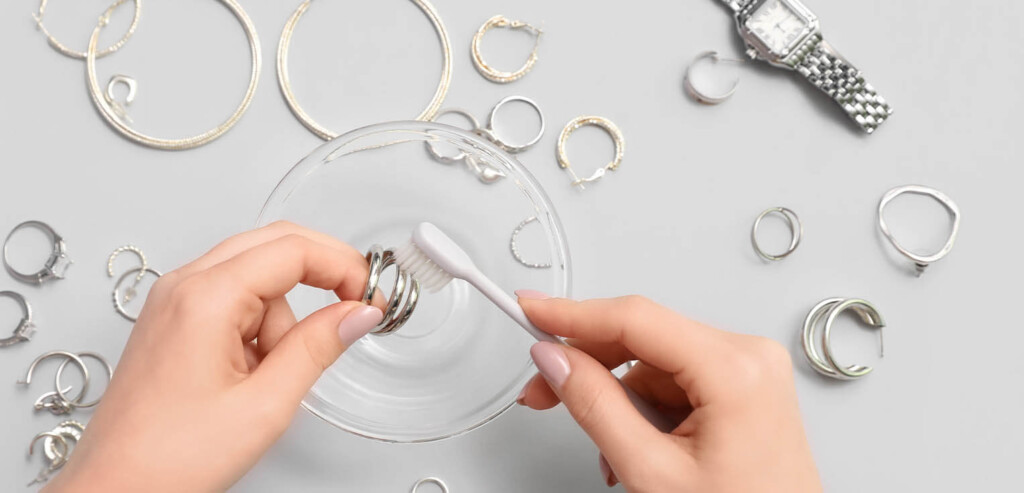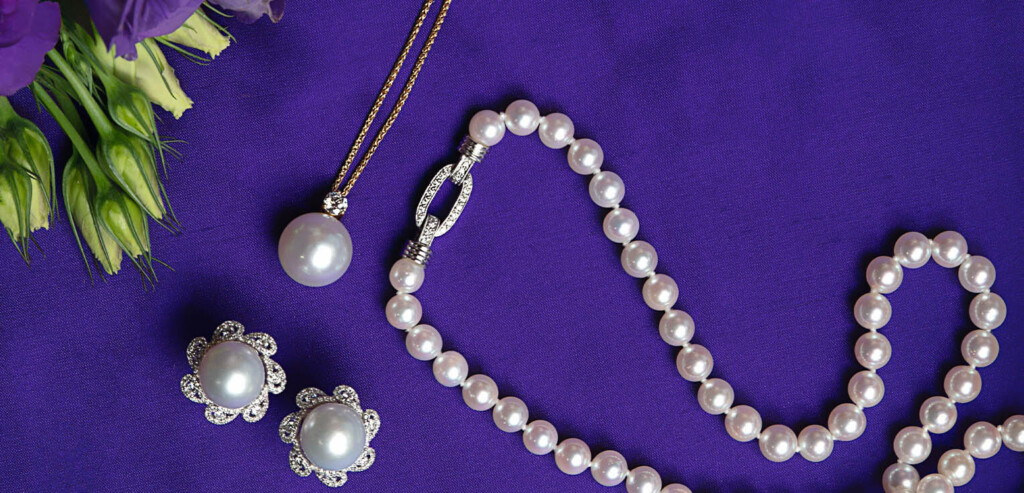Jewellery originated as a concept from as far back as prehistoric times, when shells and bones were used as personal adornments. Ancient Egyptians also took to wearing live beetles and cockroaches, in an effort to ward off evil; a practice which was remarkably resurrected in Victorian times.
However, it wasn’t really until the 13th Century that metal jewellery started appearing in everyday use. It was used to show hierarchy and status in Medieval Europe. Copper and pewter were popular among the lower classes, where it was only royalty who wore the much more expensive gems, silver and gold.
Glass was also popularised at the same time, with Murano in Venice being the birthplace of glass beads used to make necklaces. Murano is still a hotspot for glass blowers and tourists flock there to pick up their own glass jewellery in various colours and styles.
Cultural and religious jewellery
You may be surprised to learn that gold is actually frowned upon in the Christian Bible, showing it as the fancies of prostitutes who dressed themselves in it to make them more attractive. Luckily, although the concept is still pretty similar, no one bats an eyelid nowadays!
Islam also disallows men wearing gold, with women only allowed to wear earrings. Conversely, in Africa, huge earrings are a sign of power and masculinity.
Jewellery for the modern man only really became a more acceptable proposition in the 1980s, when band The Smiths wore necklaces on stage, in a revival of the hippy movement of the 1960s.
24 carat gold is the purest you can get, but is thought by European and American jewellers to be too soft from which to make jewellery. However, it is still widely used as the chosen metal in the Middle East, Africa and Asia.
The Chinese much prefer silver to gold when it comes to jewellery, often combining it with blue feathers and stones. Although it is jade which is most revered in China, ostensibly because it reflects the sought-after human qualities of beauty, hardness and durability.
Live like royalty
Discovered in 1905, the Cullinan Diamond is the biggest and heaviest example of a rough diamond ever found. It forms the centrepiece of the crown jewels and weighs over 620g or a massive 3,106.75 carats. Diamonds were first mined in India, and the British Raj took advantage of this by claiming the huge diamond for their country.
Princess Diana’s diamond and sapphire engagement ring is probably the most-recognised of all royal jewellery, with replica examples for sale all over the world. Kate Middleton was gifted the ring by Prince William on their engagement. We have some lovely diamond and sapphire rings in our collection too, if you want a touch of royalty in your life.
 |
Engagement RingsFrom just £685 |
Wedding and engagement rings
Wedding rings for men are a fairly new phenomenon in the jewellery world. They were actually used as a marketing ploy for jewellers to widen their audience, in the early 20th Century. By the 1940s, 85% of married American men wore wedding rings.
In Ancient Rome, only high-ranking people were allowed to wear rings of any sort, and wedding rings were given as part of the dowry. But, it was the Ancient Egyptians who started the tradition of wedding rings, and the placement on the fourth finger of the left hand was due to their belief that a vein of love ran directly from this finger to your heart.
Wedding rings are always a never-ending circle, to signify the union and everlasting love. But styles of wedding ring have changed a lot over the years. Starting as just braided reeds, they became more elaborate in the 15th Century when messages started being engraved onto the inside of the ring.
By medieval times, wedding rings encompassed two hands being clasped together. But, perhaps most elaborate of all, up until the 17th Century, the bride and groom would each wear a ring leading up to the wedding and these would then be given to the bride on the wedding day, with a third band, and it would provide an interlocking whole.
This ‘gimmel ring‘ is potentially the first example of the engagement ring as we know it today. Previously, engagement rings were just used as a sign of ownership, rather than romance. It was Maximillian I’s marriage to Mary of Burgundy in 1477 that brought engagement rings into popular culture.
Diamonds in engagement rings are also down to another marketing campaign. De Veers used the slogan ‘diamonds are forever’ in 1947 and it stuck in people’s consciousness when they were looking for rings to signify their forever love. Nowadays, diamonds are less popular in engagement rings, with many newly-engaged couples choosing more colourful jewels to suit their own styles and tastes.
 |
Guide to Gemstones |
Significance of stones
In fact, many gemstones have their own meaning, which is often a good way of choosing which one to have in your jewellery. We all know that birthstones exist, with one for each month of the year, but there is so much more to them than that.
Amber is the oldest gem you can get, with some of it being up to 120 million years old. Formed by fossilised pine tree sap and found in rocks and coastlines across the world. It is often worn by fiery passionate people who have a love of nature, with the transparent version most popular in jewellery.
Incredibly, although everyone thinks of diamonds as the most precious gemstone there is, a perfect ruby is worth much more than its diamond equivalent.
The richness of the red of a ruby makes it one of the recognised ‘jewel colours’.
Others include green emeralds, which were first mined by the Ancient Egyptians as far back as 3500BC, blue sapphires and purple amethysts. The latter of these is a type of quartz, but the beauty of its colour means it has been categorised as a semi-precious gem for jewellery.
Final thoughts
The word jewellery stems from the Latin for ‘plaything’, which also prompted the French word ‘jouel’. It started as something frivolous and only for the rich and powerful, but is now seen on everyone around the world in some form or another.
Well-designed jewellery will never go out of style and increases in value, making it a great investment. Check out our range of vintage jewellery online and see some of the fantastic Victorian and art deco styles for yourself. We might not have anything as old as 100,000 years, but we do have a fantastic selection of new and antique jewellery for you to choose from.





